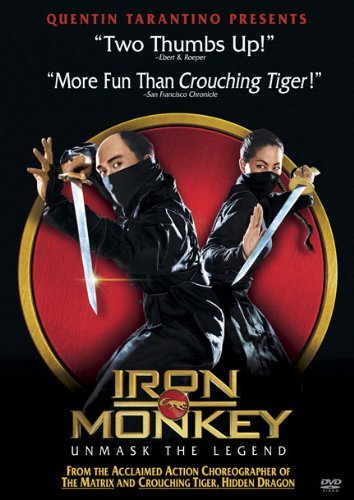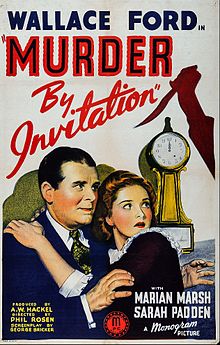PHENOMENALITY: *marvelous*
MYTHICITY: *fair*
FRYEAN MYTHOS: *adventure*
CAMPBELLIAN FUNCTIONS: *cosmological, sociological*
Based on positive reviews by other serial buffs, I've given BUCK ROGERS two separate screenings since a long-ago first-watch, because I wanted to see if I might be missing something. But no, each time I've found ROGERS extraordinarily dull. And this despite the facts that the serial was produced by Universal Studios, who had initiated the Golden Age of Serials with their FLASH GORDON three years earlier, and that the actor playing Buck was Buster Crabbe, who had essayed Gordon in both the original serial and its 1938 follow-up, FLASH GORDON'S TRIP TO MARS.
Now, as my negative review of TRIP TO MARS shows, Universal wasn't able to capture the excellence of the first GORDON there either. Still, at least the sequel still used some of the same elements that brought success to both the first serial and the original comic strip.
The BUCK ROGERS comic preceded the FLASH GORDON strip but the two had different emphases: gosh-wow gimmickery in the first and sexy exoticism in the second. Buck was always more aggressively juvenile than Flash in the comics, but since a lot of serials were aimed at kids, Universal should have been able to duplicate the strip's focus on wild pulp action with lots of sci-fi gadgets.
Instead ROGERS proffers only a smattering of gadgetry. The serial recycles the "bullet cars" from TRIP TO MARS and comes up with a few original concepts, like a molecular teleportation device that presages STAR TREK's transporter. Unfortunately the gadget most often used is also the clunkiest of them all. Villain Killer Kane (Anthony Warde) has gained political control of Earth by controlling key figures with mind-control helmets; helmets that look like nothing more than deep-bottomed cook-pots. Every time I saw one of these idiotic contrivances, my sense of wonder picked up and left.
In the comics 20th-century denizen Buck Rogers alone fell into suspended animation and did not wake up until five centuries later, only to meet future girlfriend Wilma Deering and to learn that North America has been conquered by ruthless overlords. Buck's adventures however only took place in the b&w daily strip, while the color Sunday strips were devoted to the exploits of Wilma's young brother Buddy. The serial posits that two 20th century denizens, Buck and his fellow dirigible-crewman Buddy Wade *(Jackie Moran), undergo suspended animation and end up waking up in the 25th century. The two of them encounter both Wilma Deering (Constance Moore) and another strip-character, Doctor Huer, and both inhabit an enclave, "The Hidden City," from which they oppose the tyranny of Killer Kane. So this sounds like a setup for lots of hard-hitting, ray-gun blasting action, just like the comic strip, right?
Unfortunately, writers Norman S. Hall and Ray Trampe-- who also co-wrote the lackluster TRIP TO MARS-- spend much of their time having Buck and Buddy run around trying to forge a military alliance with the denizens of the planet Saturn. (The Saturnians are played by Asians in an interesting inversion of the hero's first opponents in the comic strip, a corrupt Mongolian regime.) I suppose the script's intent was to increase sympathy for the underdog rebels, who numerically would have no chance against Kane's dominion (though one never sees vast armies at the ruler's command). But endless scenes of Buck begging the Saturnians to support the rebel cause just don't offer much in the way of thrills. Possibly the serial just didn't have a sufficient budget to mount a lot of ray-gun battles and swordfights. This may be why ROGERS underperformed with its audience, and Universal scrapped a plan for a sequel, choosing instead to produce their third and last FLASH GORDON chapterplay.
Buster Crabbe's Buck isn't all that different from his Flash, but since Crabbe was extremely good at playing the good-natured hero type, this could have worked if the script had given the actor heroic things to do. Because Buck has so many scenes with Buddy, Wilma is kicked out of her comic-strip position as the hero's sidekick, and actress Moore has little to do but act resolute. To be sure, Jackie Moran sells the part of Buddy so winsomely that his participation is consistently enjoyable, in marked contrast to the great majority of juvenile actors in adventure-serials. Anthony Warde, though, makes a terrible despot, and not just because I'm used to him playing villainous second bananas. The script tries to sell him as a futuristic gangster, a tough enforcer-type who just lucked onto his hypnotic helmets, but whenever he's on screen he's utterly unconvincing as any kind of leader. Philson Ahn, brother of the better known support-actor Philip Ahn of KUNG FU fame, plays the Saturnian prince Tallen, and he projects quiet dignity in all of his scenes, even if I might wish that the Saturnian part of the story had much less emphasis.
Though I didn't enjoy ROGERS, I gave it a fair mythicity rating simply because the script takes a stab at representing the difficulty of political alliances, however dull the results. Curiously, though Buck and Wilma barely share any scenes, the conclusion references the duo's comic-strip romance. A fair number of serials eschew boy-girl stuff for most of the run-time but toss in the suggestion of a hookup at the very end. ROGERS isn't odd in doing this, but here Buddy attempts to push Buck and Wilma together, almost as if his character were apologizing to the Wilma character for having stolen so much of the spotlight.

















